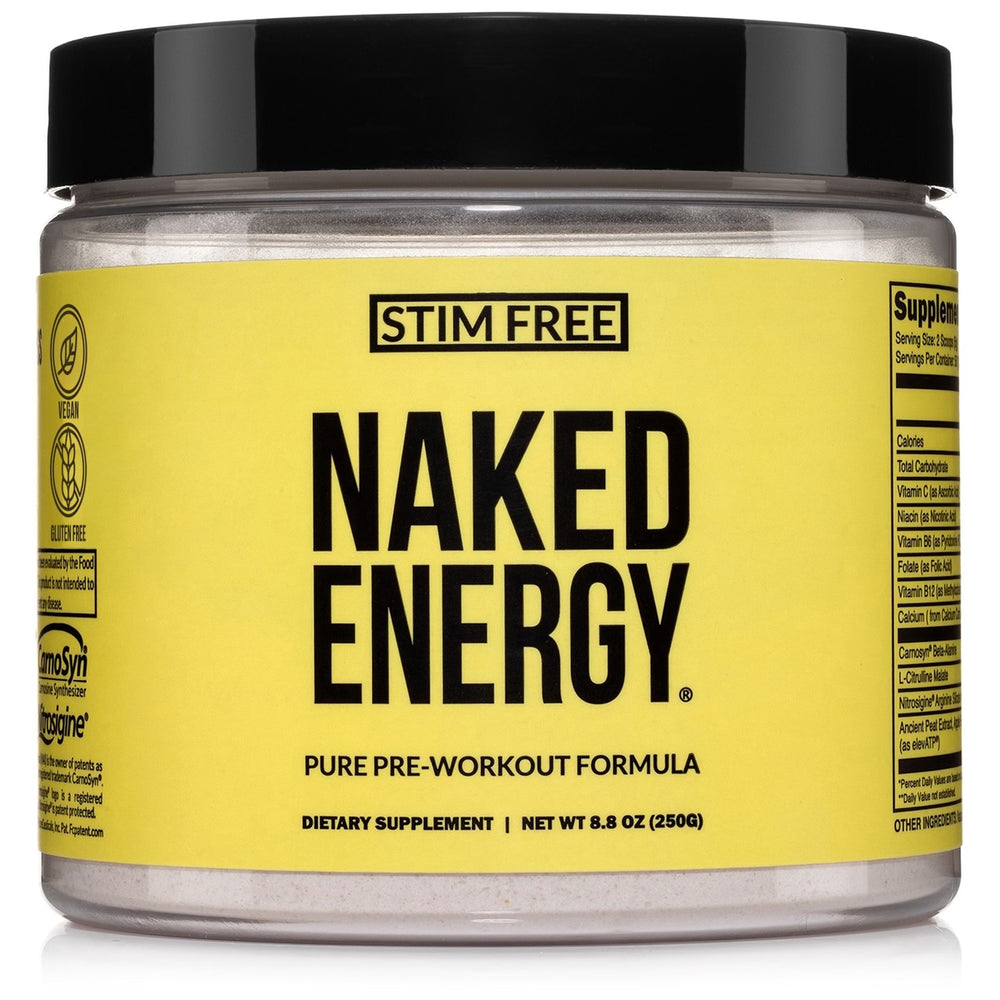A lot of people neglect muscular endurance when they train. As a result, these people tend to have poor functional strength compared to their size and 1-rep max.
This is important because better muscular endurance and functional strength mean lower risk of injury, better performance in other athletic activities, and just feeling better and more mobile throughout the day.
Anyone can benefit from having better muscular endurance. Read on to learn how.
Muscle Endurance Definition

Muscular endurance is a measure of how long your muscles can keep putting out force before they get fatigued. More specifically, it's the ability of a muscle or group of muscles to sustain repeated contractions or maintain a static position over an extended period.
Most people tend to focus on either strength or cardio training at the gym. Muscular endurance is in the middle of the two.
Strength is how much force you can generate. But muscular endurance is how long you can generate force for.
Think of it like training for a 1-rep maximum vs training for the total number of reps.
Training muscular endurance does not necessarily mean you’ll be able to lift more, run/cycle faster, etc - but that you'll be able to do it for longer.
The physiological basis for endurance lies in your muscle fibers. Our muscles contain two primary types of fibers: type 1 (slow-twitch) and type 2 (fast-twitch). While type 2 fibers generate more power and are responsible for explosive movements, type 1 fibers are designed for endurance.
They contract more slowly but can sustain activity much longer before reaching fatigue. Developing muscular endurance primarily targets these slow-twitch fibers, enhancing their ability to resist fatigue during repeated contractions or sustained effort.
This differs significantly from training for strength/hypertrophy, which primarily develops type 2 muscle fibers through high-resistance, low-repetition exercises. Understanding this distinction helps explain why someone who can bench press impressive weights might struggle with push-ups when the rep count gets high.
Why is Muscular Endurance Important?

There's a correlation between muscular endurance and better overall health and well-being.
For one thing, studies have found an inverse link between muscular endurance and risk of musculoskeletal injuries (meaning injuries to bones, joints, ligaments, and muscles).
A 2017 review published in the Journal of strength and conditioning research found fewer injuries to study participants (taken over 45 studies between 1970 and 2015) with a higher level of strength and endurance.
Basically, you're less likely to get injured if your muscular endurance is higher.
Another study found that better muscular endurance leads to a decreased risk of cardiovascular diseases.
So those are two big reasons that science tells us you should care about muscular endurance. It's also important if you want your muscular strength to translate to other areas of your life, outside of the gym, where you need to maintain strength output for more than just 1 or 2 reps.
Benefits of Muscular Endurance

What are the benefits of training and improving your muscular endurance with exercises?
Decreased injury risk: When your muscles function better, for longer, before hitting a point of fatigue, you're less likely to get muscle or joint injuries. This injury risk reduction is particularly valuable for stabilizing muscles around joints.
Cardiovascular health: Many endurance exercises double as cardio workouts, giving you additional benefits for heart health and overall fitness.
Weight loss: Like above, the nature of most endurance exercises means they also help you burn calories and lose weight.
Functional strength and athleticism: It's easier to translate your strength gains outside the gym, whether it's for everyday activities, sports, martial arts, or anything else, if you have the endurance to maintain power output past just a few reps.
Enhanced everyday activities: Muscular endurance supports the activities we perform daily - from carrying groceries and climbing stairs to maintaining good posture during long workdays. Better endurance means these tasks require less effort and cause less fatigue.
Improved balance and mobility: The stabilizing muscles that benefit from endurance training play a crucial role in balance and mobility, making movement more efficient and reducing fall risk, especially as we age.
Core strength: Endurance training often engages the core muscles, which are essential for posture, stability, and power transfer between the upper and lower body.
Better performance in sustained activities: Whether you're playing sports, hiking, swimming, or cycling, muscular endurance allows you to maintain performance levels longer before fatigue sets in.
Nutritional and hydration benefits: Training for endurance encourages better nutrition and hydration habits, as both are essential for sustaining energy levels and supporting recovery.
Lower-body strength: Many endurance exercises target the large muscle groups of the legs, improving stamina for walking, running, and other activities that require sustained lower-body strength.
How to Improve Muscular Endurance

Like anything you want to improve, the best way to build muscular endurance is to test it, using progressive overload.
If you want to get stronger, you need to lift progressively heavier things.
Improving muscular endurance means you need to do more reps and increase the time your muscles are under stress.
You'll want to focus on high-rep sets, decreasing the amount of weight in order to hammer out more volume (i.e. sets and reps).
Improving Muscular Endurance
To effectively build muscular endurance, you need a systematic approach focused on progressive overload - gradually increasing the demands on your muscles over time. Here's a step-by-step guide:
-
Establish your baseline: Before progressing, determine your current endurance level for different exercises. This might mean counting how many push-ups you can do before failure or how long you can hold a plank.
-
Set appropriate resistance levels: Choose weights that allow you to perform high repetitions (15-25 reps or more) with proper form. This is typically 50-70% of your one-repetition maximum (1RM).
-
Focus on high-rep sets: Aim for a minimum of 15-25 repetitions per set, with some exercises (especially bodyweight movements) potentially going much higher as your endurance improves.
-
Gradually increase volume: Each week, try to add a few more repetitions or slightly increase time under tension. For example, if you did 3 sets of 20 push-ups last week, aim for 3 sets of 22 this week.
-
Maintain proper form: As muscle fatigue sets in, form tends to deteriorate. Focus on maintaining technique even as you reach higher repetitions.
-
Adjust rest periods: For endurance training, keep rest periods relatively short (30-90 seconds between sets) to train your muscles to recover quickly.
-
Training frequency considerations: Train endurance 2-3 times per week for each major muscle group, allowing 48 hours of recovery between sessions targeting the same muscles.
-
Track progression systematically: Keep a workout journal to monitor increases in reps, sets, and duration for different exercises.

Renowned strength coaches and sports therapists recommend a gradual approach to progression. Expect noticeable improvements within 4-6 weeks of consistent training, though this varies based on your starting fitness level, genetics, and training consistency.
I’ve found clients show clear improvements in muscular endurance within just 1-2 weeks at times, shown by an increase in the number of reps they’re able to perform until failure. That said, it’s not a sprint - sustained progress is better than short spikes.
For optimal development of the posterior chain (important for posture and lower back health), incorporate exercises like bodyweight pull-ups, kettlebell swings, and deadlifts with endurance-focused rep schemes.
Remember that muscle fatigue is an essential stimulus for endurance adaptations, but complete failure should be approached carefully to avoid compromising form and increasing injury risk.
How Does Muscular Endurance Improve? - The Science

The science of muscular endurance is a little different from training for strength/hypertrophy only.
That's why it's vital to be deliberate about what you're training for. It's time to work out a muscular endurance training program for yourself. But before we talk serious muscular endurance training, let's talk about muscle fibers.
Our muscles are made up of type 1 and type 2 muscle fibers.
Type 2 muscle fibers are commonly known as "fast-twitch". These are responsible for fast and explosive movements.
Type 1, or "slow-twitch" muscle fibers are the opposite. They're responsible for sustaining output over a longer space of time.
Certain activities are going to improve one or the other. A sprinter, for example, needs to focus on training type 2, "fast-twitch" muscle fibers. While type 1, "slow-twitch" muscle fibers are important for a marathon runner.
One factor that gives marathon runners the edge is aerobic endurance training. The correlation between endurance and strength means you'll incorporate your entire body while building muscular endurance.
But remember, for endurance, it's all about the slow twitch. Keep that in mind with your training.
What is an Ideal Rep Range to Increase Muscular Endurance?

When you train muscular endurance, you want higher volume.
A 2021 study found that muscular endurance gains were maximized with light loads (less than 60% of your 1-rep max) at 15 or more reps per set (you may want to push this up to 25).
The goal is to get your muscles fatigued, and be able to push through more reps while your muscles are in that state of fatigue.
These rep ranges are fluid, but aim for a minimum of 15-25. From there, lower weight and increase reps if endurance is your only goal, or keep it around 15-25 if you want a balance between strength and endurance.
Combining Strength and Endurance Training
Creating a balanced workout plan that develops both strength and endurance requires thoughtful programming. Here's how to effectively combine these training modalities:
Design a Complementary Schedule:
-
Dedicate specific days to strength-focused training (heavy resistance training with lower reps)
-
Allocate separate days for endurance-focused sessions (lighter weights with high repetitions)
-
Consider a 3-day split: strength day, endurance day, cross-training day
Effective Integration Strategies:
-
Start workouts with strength exercises when muscles are fresh
-
Follow with endurance work for the same muscle groups
-
Incorporate compound movements that develop both qualities (kettlebell training, circuit training)
Cross-Training Techniques:
-
Use tools like the Hydrow rowing machine for full-body endurance that complements strength work
-
Implement SuuntoPlus guides for structured cardio sessions that build aerobic endurance
-
Alternate between different training styles to challenge your body in new ways
Recovery Considerations:
-
Schedule 1-2 complete rest days weekly
-
Use active recovery days (light walking, swimming, yoga) between intense sessions
-
Prioritize 7-8 hours of quality sleep for muscle repair and adaptation
Progress Tracking:
-
Monitor both strength metrics (max lifts) and endurance markers (max reps, time to fatigue)
-
Adjust intensity based on performance trends and recovery capacity
-
Periodically test grip strength as an indicator of overall neuromuscular fatigue
Balance Development:
-
Don't neglect core strength, which serves as the foundation for both strength and endurance
-
Focus on overall upper body strength and lower body development rather than isolating specific muscles
-
Adjust the ratio of strength-to-endurance work based on your primary fitness goals
Remember that fast and slow-twitch muscle fibers have different recovery needs. High-intensity training that taxes fast-twitch fibers may require more complete recovery, while moderate endurance work can sometimes be performed more frequently. Listen to your body and adjust accordingly.
Exercises for Muscular Endurance

Muscular endurance development involves both aerobic and anaerobic energy systems. Aerobic activities utilize oxygen to sustain prolonged, lower-intensity exercise, while anaerobic activities operate without oxygen for shorter, more intense bursts. Effective endurance training incorporates both systems.
Let's look at some of the best exercises you can do to increase muscular endurance (and which I’ve seen deliver the best results):
-
Plank
Planks are among the most basic muscular endurance exercises. They work the endurance of your core, along with arms and legs to a smaller degree. You'll want to push yourself to progress by increasing the time you spend in the plank - start from 45 seconds or 1 minute if you're a beginner.
-
Push-ups
Bodyweight exercises like push-ups are also great for endurance. One push-up is easy - but 50, and 100 push-ups are hard, which is exactly where muscular endurance comes into play.
-
Sit-Ups/Crunches
Abdominal exercises like sit-ups and crunches are the equivalent of push-ups for their muscle group. Keep pushing the rep range higher to achieve progressive overload and improve endurance.
-
Bodyweight Squats
Weighted squats are great for strength training, but take the weight off and do high-rep bodyweight squats for a (safer) alternative that works endurance, and slow-twitch type 1 muscle fibers. Keep your feet shoulder-width apart and use slow, controlled movements.
-
Lunges
Lunges are another muscular endurance exercise targeting the legs. At the same time, they help improve balance and mobility, and the small stabilizing muscles around the knees, ankles, and hips, which are often neglected.
-
Loaded Carries
Loaded carries (such as farmer's walks) are great for full-body endurance (primarily in the lower half). You can alter this resistance training exercise to focus on core strength, upper body strength, grip strength, and much more as well.
-
Kettlebell Swings
Kettlebell swings are incredibly versatile. They're a great way to build power, core strength, improve the posterior chain, and (with a lower weight and higher rep range), muscular endurance as well.
-
Pull-Ups
Pull-ups are also amazing for endurance. Once you get to the point where you can do bodyweight pull-ups fairly comfortably, you can either add weight (if you want to focus on strength), or steadily increase your rep range in order to focus on muscular endurance.
-
Inverted Row
An inverted row is basically a bench press, in reverse. You position yourself under a bar, and pull yourself up to where your chest meets the bar. Doing this unweighted is amazing for upper body muscular endurance, along with core strength.
-
Swimming
As well as one of the best forms of low-impact cardio, swimming is also an amazing endurance exercise. The resistance provided by the water gives a serious workout to your type 1 muscle fibers.
-
Running
Running is another form of cardio that doubles as an endurance exercise. It's primarily for your legs - and to get the benefits of endurance, you'll want to maintain a slower pace over a longer distance (rather than short sprints or interval work).
-
Rucking
Similar to running, along with loaded carries, rucking involves walking or running for a long distance with a weight loaded on your back (typically in a backpack). Along with endurance, it's great at building lower-body strength, cardio, and for weight loss.
Additional Endurance-Building Exercises:
-
Mountain Climbers
This dynamic exercise targets core endurance while elevating your heart rate, making it excellent for both muscular and cardiovascular endurance.
-
Burpees
The ultimate full-body endurance exercise, burpees challenge every major muscle group while developing cardiorespiratory fitness.
-
Dips
Similar to push-ups but targeting different muscle groups, dips build tremendous endurance in the triceps, chest, and shoulders.
-
Box Jumps
Performed at a steady pace for higher repetitions, box jumps build lower body power endurance while improving coordination.
Training Frequency Recommendations:
-
For beginners: I recommend 2 endurance sessions weekly with 48-72 hours recovery between sessions
-
For intermediate/advanced: aim for 3-4 sessions weekly, potentially training different muscle groups on consecutive days
-
Integrate swimming, running, or cycling 1-2 times weekly as aerobic cross-training to complement resistance-based endurance work
Muscular Strength Exercises


While endurance focuses on sustaining effort over time, muscular strength is about generating maximum force. Developing both qualities creates a well-rounded fitness profile. Here are key exercises that specifically target muscular strength:
Compound Strength Builders:
-
Deadlifts
The ultimate total-body strengthener, deadlifts primarily target the posterior chain while engaging nearly every major muscle group. Focus on 3-5 sets of 3-8 reps with heavier weights to maximize strength development.
-
Weighted Squats
Unlike their bodyweight counterparts used for endurance, weighted squats with barbells or dumbbells build tremendous lower body strength when performed with heavier loads and lower repetitions (4-6 reps).
-
Barbell Rows
This compound movement builds significant back, shoulder, and arm strength. The horizontal pulling pattern complements pushing movements and develops critical posterior chain strength.
-
Bulgarian Split Squats
This unilateral exercise intensely targets each leg individually, building strength while addressing muscle imbalances. The stability challenge makes it particularly effective for functional strength.
Isolation Strength Exercises:
-
Biceps Curls
While compound movements should form the foundation of strength training, isolation exercises like biceps curls can target specific muscles for additional development.
-
Single Leg Hip Thrusts
This focused exercise builds glute and hamstring strength more specifically than compound movements alone.
-
Wall Sits
Though typically considered an endurance exercise, wall sits performed with added resistance (weight on lap) can effectively build isometric strength in the quadriceps.
For optimal strength development:
-
Focus on heavier weights (80-95% of your 1RM)
-
Keep repetitions lower (3-8 per set)
-
Rest longer between sets (2-5 minutes) to allow for maximum effort on each set
-
Emphasize proper form over additional weight
-
Incorporate both fast-twitch and slow-twitch type 1 muscle fiber development by occasionally varying rep ranges
Remember that while bodyweight exercises can build significant strength when properly progressed, adding external resistance typically provides greater strength stimulus for intermediate and advanced trainees.
Who Benefits Most From Muscular Endurance Exercises?
Muscular endurance is essential for athletes. In most sports, you need to be able to remain active for a longer course of time, so you generally need a combination of fast and slow-twitch muscle fibers.
Endurance can benefit anyone, though. Even if you're training primarily for power and muscle gain, endurance will help you maintain proper form, and hammer out more reps more safely.
How Many Times a Week Should I Train for Endurance?
It's a good idea to do muscular endurance training 2-3 times per week. You might want to increase this frequency if endurance is your priority, or decrease it to 1-2 times if your main goal is strength/hypertrophy, and you're just adding endurance exercises as a supplement.
How Long Before My Muscular Endurance Improves?

This depends on your workout routine. If you do more workouts, and maintain a higher intensity, you'll progress faster. Fewer workouts or shorter workouts, and it's the opposite.
However, endurance generally takes a longer time to improve than other areas. That's just the nature of this energy system. It's all about steadily increasing your capacity, through longer workouts with higher rep ranges.
Like with any kind of training, stick with it and try to maintain a consistent workout schedule. You won't go from 0 to 100 overnight, but you'll see an incremental boost in endurance that really adds up over time.
Training Tips and Safety
Developing muscular endurance safely requires attention to detail and smart training practices. Here are essential tips to maximize results while minimizing injury risk:
Safety Fundamentals:
-
Proper form and technique must take priority over rep counts or weight. Form deterioration during high-rep sets is common but should be avoided by selecting appropriate resistance levels.
-
Begin each workout with a thorough warm-up that includes dynamic stretching and movement-specific preparation.
-
Incorporate regular rest and recovery days into your exercise program to allow muscles to repair and adapt.
-
Listen to your body and distinguish between productive discomfort and potential injury signals.
Nutritional Considerations:
-
Maintain a balanced diet rich in protein (for muscle repair), complex carbohydrates (for energy), and healthy fats.
-
Prioritize hydration before, during, and after workouts, as even mild dehydration significantly impacts endurance performance.
-
In terms of supplementation, beta-alanine may support muscular endurance, particularly in older adults
-
Consider timing nutrition around workouts for optimal energy and recovery.
Consistency and Progression:
-
Use a workout journal or fitness training apps to track progress, noting reps, sets, weights, and perceived exertion.
-
Implement gradual intensity buildup rather than dramatic increases in volume or resistance.
-
Stay consistent with your workout schedule, as endurance adaptations require regular stimulus.
Professional Guidance:
-
Consider consulting a personal trainer when starting out or when looking to break through plateaus.
-
Discuss any injuries or medical concerns with healthcare providers before beginning or intensifying an endurance program.
-
Seek expert advice for high resistance training to ensure proper technique for more complex movements.
Mental Approach:
-
Develop sustainable motivation strategies rather than relying on initial enthusiasm.
-
Set realistic, measurable goals for endurance development.
-
Celebrate improvements, no matter how small, to maintain psychological momentum.
Remember that endurance training success comes from consistency over time rather than occasional intense efforts. By following these guidelines and gradually increasing demands on your muscular endurance systems, you'll build lasting improvements in stamina, functional strength, and overall physical capacity.









